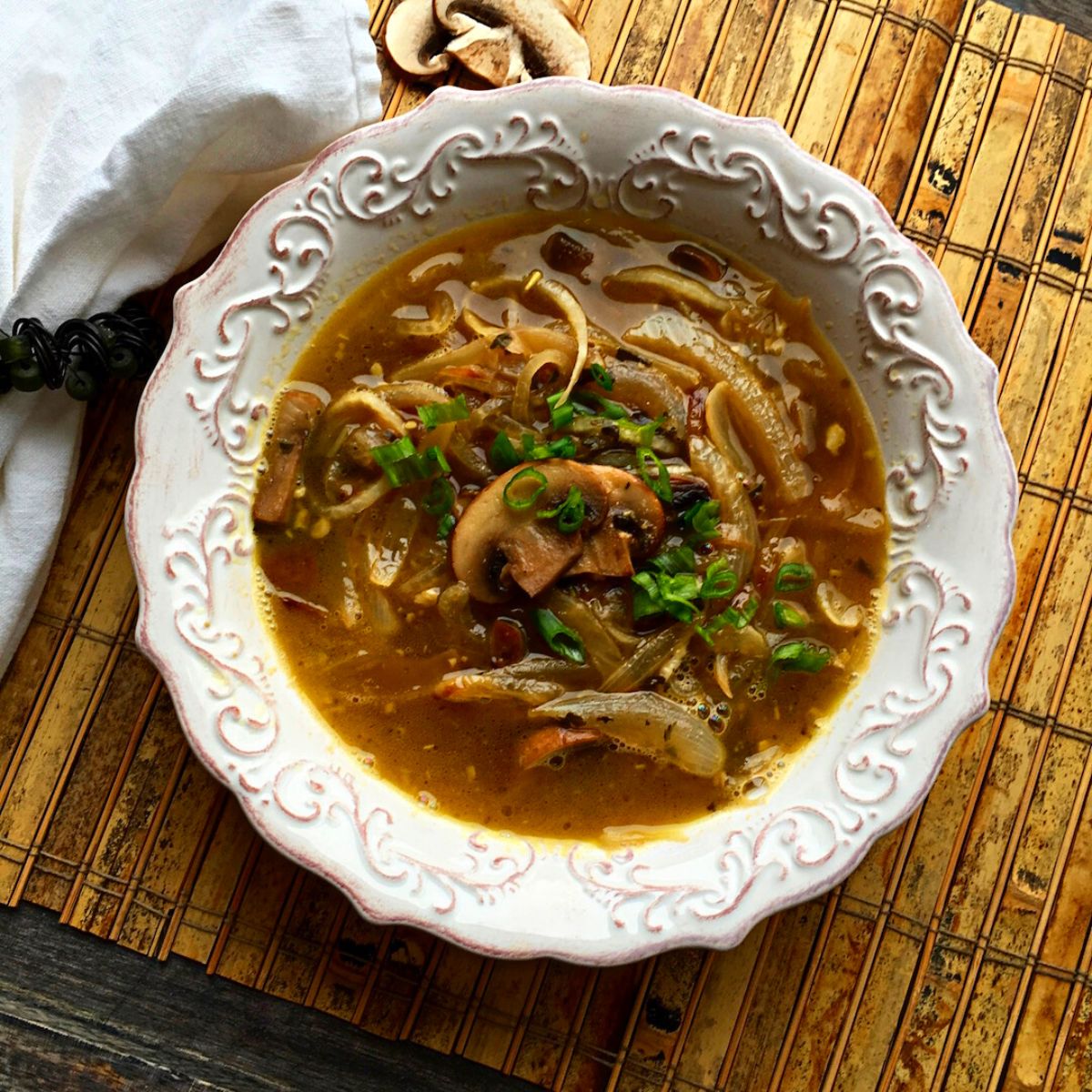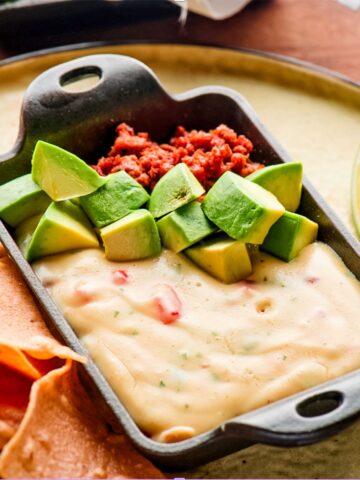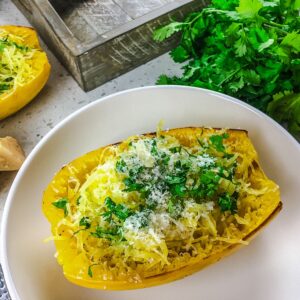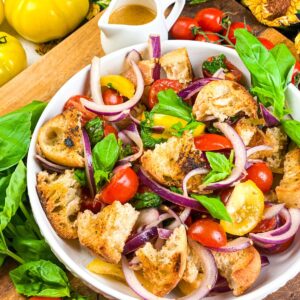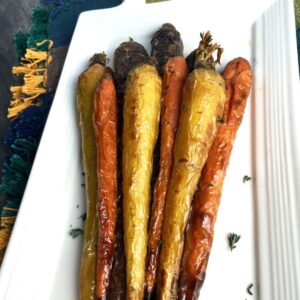Whole30 Daikon Noodle Soup is a simple, yet delicious and healthy dinner option. The soup is hearty and filling, but also light and cleansing. It is perfect for those who are looking for a healthy and satisfying meal.
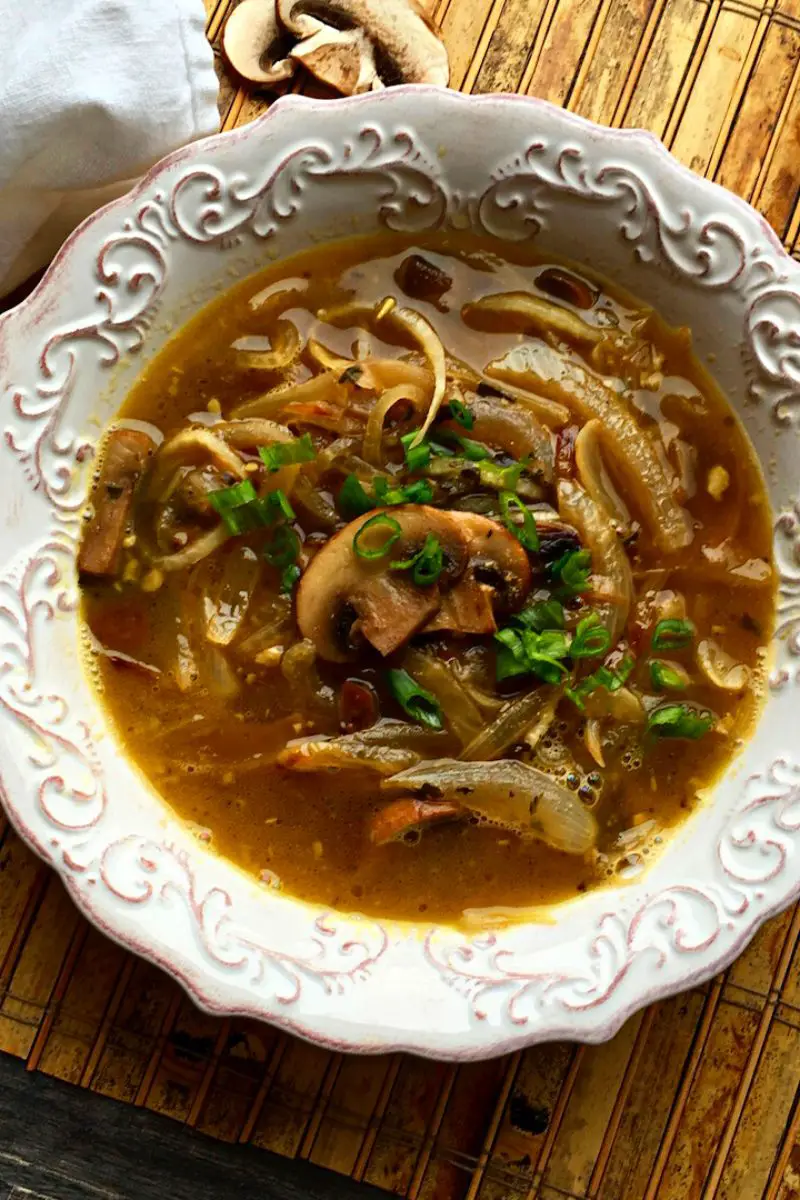
Whole30 Daikon Noodle Soup is also vegan and gluten-free.
Whole30 Daikon Noodle Soup is made with daikon radishes, carrots, onions, garlic, ginger, chicken broth, and tamari sauce. The soup is served with a side of rice and topped with green onions and cilantro. This dish is not only Whole30 compliant, but it is also vegan and gluten-free. Whole30 Daikon Noodle Soup is a perfect option for those who are looking for a healthy and delicious dinner option.
What is Whole30?
Whole30 is a program that helps people change their relationship with food. The program lasts for 30 days, and during that time participants eat whole, unprocessed foods. They avoid sugar, alcohol, grains, legumes, dairy, and other foods that can be difficult to digest. Whole30 is based on the idea that removing these foods from your diet will help your body to heal and feel better. The program has been successful for many people, and it is one of the most popular diet programs available today. If you are looking for a way to improve your relationship with food, Whole30 may be right for you.
This was inspired by my other recipe on this site, and pairs well with this amazing sidedish recipe.
Yield: 6 servings
Total Prep Time: 40 minutes
Jump to:
Ingredients
- 4” Daikon radish root
- 3 small white onions (or 2 medium)
- 3 T. coconut oil
- 3 T. vegetable stock
- Salt and pepper, to taste
- 8 oz. baby Portobello mushrooms, cut into thin slices
- 2 t. dried basil
- 2 t. dried oregano
- 1 t. garlic powder
- 32 oz. vegetable stock
- Garnish: (optional)
- 3 green onions, green parts only, finely sliced
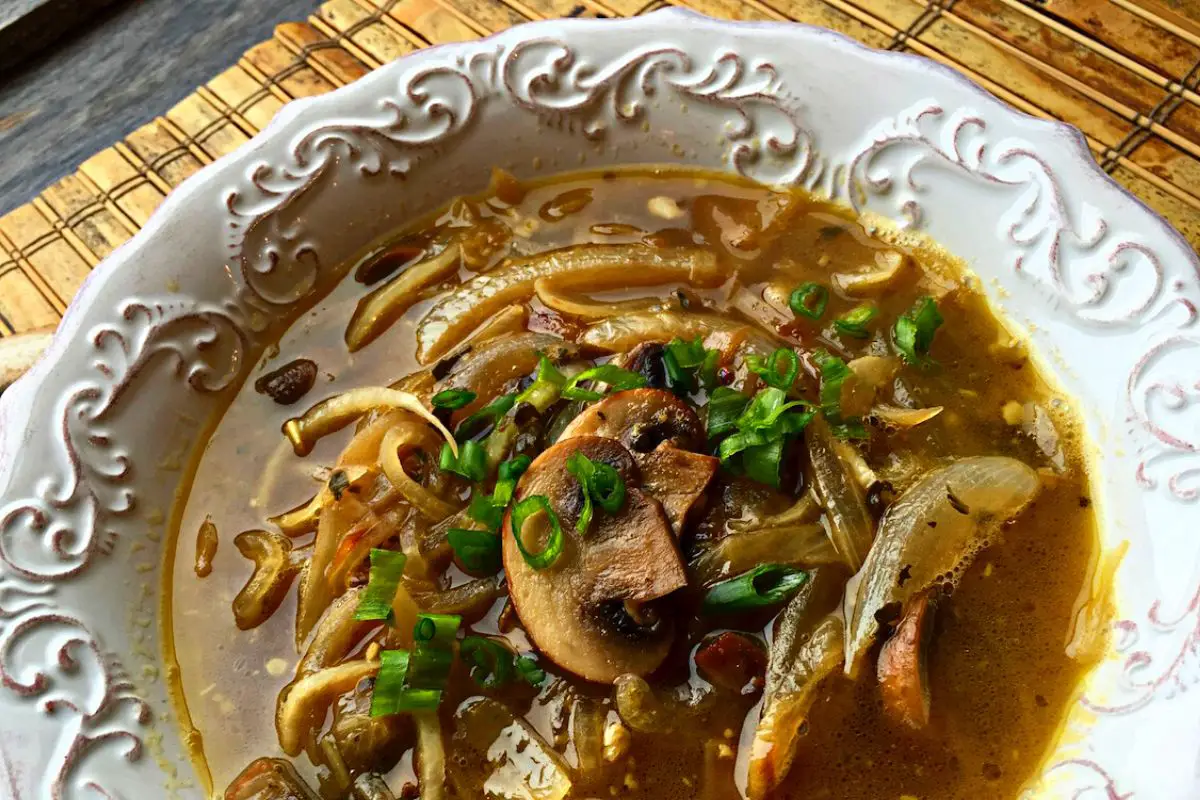
Instructions
Remove the outer skin of the Daikon root with a potato peeler. Using the smallest blade on a spiral slicer, spiralize the root into long, thin, spaghetti-like strands. For best results, trim the strands with kitchen scissors once they reach about 10-12” long. Place trimmed strands on clean paper towels to absorb excess moisture and set aside.
Slice off the ends of each onion and remove the papery outer layers. Cut onion in half lengthwise (from root to tip). Then cut each section across the middle to form four sections. Cut each section lengthwise into long strips.
Tip: Don’t cut the onions too thin, or they may burn while cooking.
Over medium heat, melt coconut oil in a large, heavy-bottomed skillet with high sides. (For best results, do not use a non-stick pan). Add onions and stir until coated.
Cook onions over medium heat for approximately 45 – 50 minutes, stirring every 5 minutes or so to ensure they cook evenly and don’t stick to the pan. The exact cooking time will vary based on several factors, including the age of the onions and how many you cook at one time.
Once the onions reach the desired depth of color, add 3 tablespoons vegetable stock to deglaze the bottom of the pan. Add more if necessary to scrape up all the brown bits and then season the onions with salt and pepper, to taste.
Next, add the sliced mushrooms, dried herbs, and garlic powder to the pan with the onions and sauté until tender, approximately 5 minutes. Add remaining vegetable stock to skillet and simmer over medium-low heat until heated through, about 10 – 15 minutes.
Increase heat to medium and add Daikon “noodles.” Cook for another 5-6 minutes and season with salt and pepper, to taste.
Ladle soup into individual serving bowls and garnish with sliced green onion. Serve immediately.

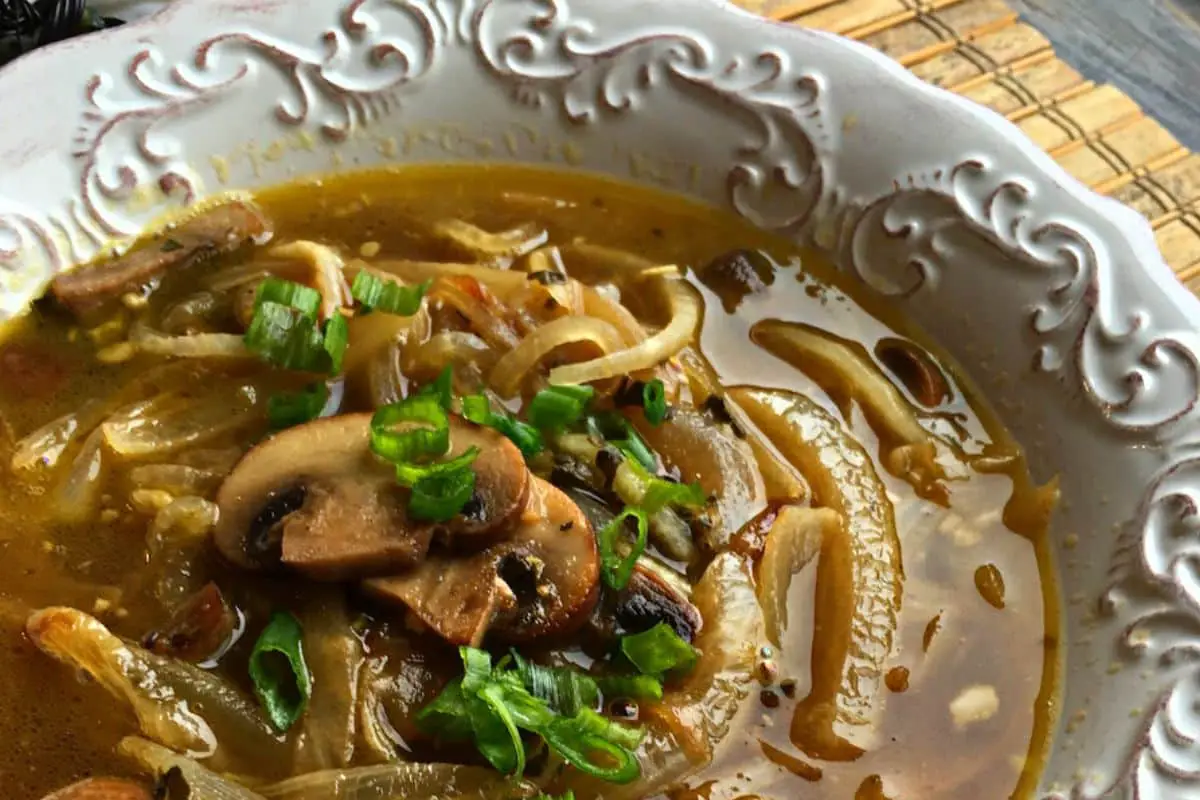
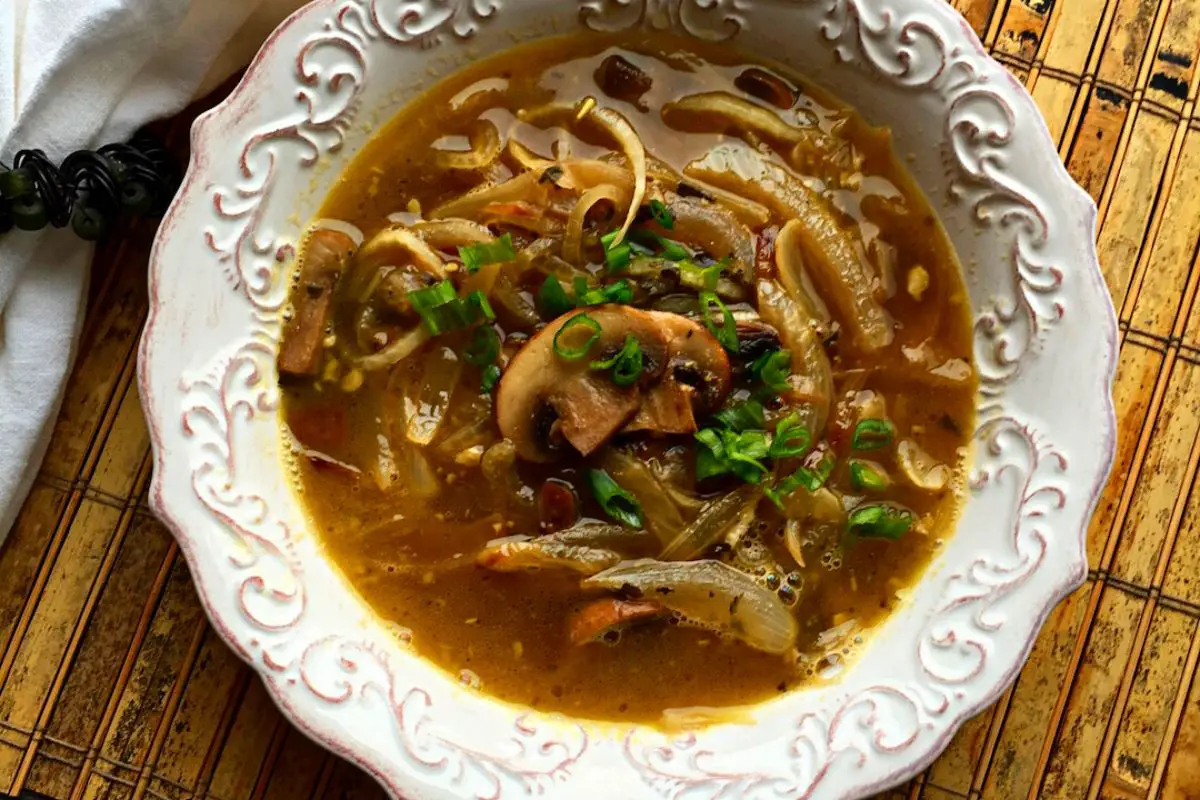
Variations
Whole30 Daikon Noodle Soup is a simple and delicious soup that can be easily made at home with just a few ingredients. The great thing about this soup is that it is very versatile and can be easily customized to your liking. For example, you could add chicken or shrimp to the soup for some extra protein.
Or, if you are looking for a vegan option, you could simply omit the meat and add additional vegetables such as carrots or mushrooms. You could also change up the noodles that you use in the soup. If you can't find daikon noodles, you could use zucchini noodles or even rice noodles. No matter what variations you decide to make, Whole30 Daikon Noodle Soup is sure to be a hit!
Equipment
Special equipment: vegetable spiral slicer, such as the Paderno World Cuisine Tri-Blade Vegetable Spiral Slicer or the OXO Spiral Vegetable Slicer.
Storage
Whole30 Daikon Noodle Soup can be stored in the fridge for up to 3 days or in the freezer for 2-3 months. To store, simply place the soup in an airtight container and refrigerate it. When you're ready to eat, reheat the soup on the stove over low heat until warm. If you have leftovers, they can be stored in the fridge for up to 3 days.
To store, simply place the leftovers in an airtight container and refrigerate. When you're ready to eat, reheat the leftovers on the stove over low heat until warm. Thanks for asking! Whole30 Daikon Noodle Soup can be stored in the fridge for up to 3 days or in the freezer for 2-3 months.
Top tip
Whole30 Daikon Noodle Soup is a delicious and healthy alternative to traditional pasta dishes. The key to making a great Whole30 Daikon Noodle Soup is to use fresh ingredients and to cook the noodles properly. Here are some tips to help you make the perfect Whole30 Daikon Noodle Soup:
- Use fresh daikon radishes for the best flavor and texture. Avoid pre-packaged, pre-shredded daikon as it can be watery and bland.
- Cook the noodles in simmering water for 2-3 minutes until they are just tender. Do not overcook the noodles as they will become mushy.
- Whole30 compliant chicken or beef broth can be used to add flavor to the soup. For a vegan option, use vegetable broth instead.
- Add your favorite vegetables to the soup for extra nutrition and flavor. Common additions include carrots, celery, and mushrooms.
- Fresh herbs can be used to add a touch of flavor to the soup. Try adding basil, oregano, or thyme.
- Whole30 compliant sauces can be used to add depth of flavor to the soup. Popular choices include coconut aminos or tahini sauce.
- Toppings such as green onions, cilantro, or diced avocado can be added for extra flavor and texture.


